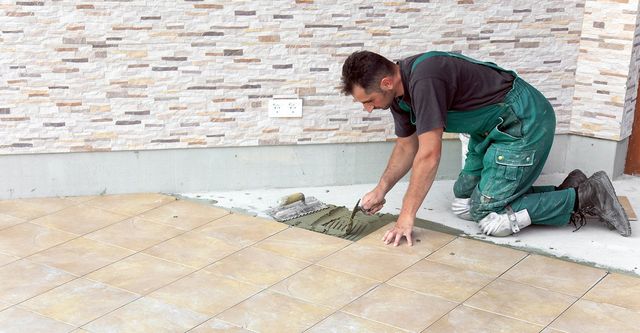Stone surfaces are a timeless element in architecture and design, often serving as the bedrock for both interior and exterior spaces. Whether it is a grand heritage structure, a charming patio, or elegant worktops, the appeal and durability of stone add a unique character to any environment. However, like all substances, stone can deteriorate over the years, leading to a need for repair. This guide aims to provide insights into the methods and methods that can restore your stone areas back to life, ensuring they radiate as brilliantly as they did when first set.
Renovating stone is not just about appearance; it also plays a vital role in maintaining the structural stability and historical significance of a building. Many homeowners may wonder where to start when it comes to stone restoration or may be unsure about the issues to avoid during the steps. From comprehending the most suitable materials for restoring heritage properties to recognizing the clues that it might be time to renovate your stone faces, this resource will serve as your thorough tool. Whether you are thinking about a DIY project or thinking about engaging specialists, knowing what to anticipate can make all the difference in achieving breathtaking effects.
Common Mistakes in Stone Refurbishment
One of the key frequent errors in rock restoration is the application of incorrect washing methods or solutions. Numerous DIY enthusiasts may opt for aggressive substances or abrasive instruments, thinking they will successfully restore the stone's natural appearance. Nonetheless, such methods can cause scratching, etching, or discoloration of the rock surface. It is essential to research and select gentle, safe for stone cleaning products to ensure the quality of the stone is upheld throughout the restoration process.
Another common pitfall includes failing to properly assess the type of stone being restored. Every rock type has unique properties that determine suitable restoration methods. Failing to recognize whether the stone is another material can cause unsuitable treatments that may cause permanent damage. Spending the effort to understand the specific traits of the stone will inform the choice of appropriate restoration methods and products.
Lastly, one major oversight is overlooking the significance of coating the rock after restoration. Numerous individuals may focus on the washing and polishing steps, ignoring the last phase of applying a proper sealant. A sealant provides an important barrier against spots, water, and environmental damage. Skipping this step can cause rapid deterioration, reversing all of the work made during the restoration. Always ensure to complete with a high-quality coating to protect the beauty and longevity of refurbished rock surfaces.
Key Techniques for Effective Restoration
In the realm of concerning stone restoration, the primary procedure involves assessment. Examine https://notes.io/wJ8Ce of the stone surfaces to detect issues such as fissures, surface discoloration, or deterioration. This assessment will decide the necessary techniques for restoration and help organize which areas need immediate attention. Pay attention to the stone type, previous treatments, and any damages to ensure that the selected restoration methods will be suitable for the material.
Following that, cleaning is essential for effective restoration. Use soft cleaning agents that are compatible for the specific type of stone. Techniques such as gentle washing or using non-abrasive brushes can help clear away dirt and grime without causing further damage. Avoid harsh chemicals or harsh instruments that can wear down the stone surface. A thorough cleaning not only reveals the true condition of the stone but also sets up it for additional restoration processes.
In conclusion, applying suitable restoration techniques is important. Based on the findings from the assessment and the type of stone, techniques may include patching cracks, resurfacing, or applying sealants. For historic stones, it's crucial to use materials and methods that reflect the original craftsmanship, guaranteeing the restoration preserves the character of the stone. Routine maintenance practices should also be considered to protect the newly restored surfaces for the future.

Caring for Your Restored Stone Finishes
After your stone surfaces are restored, maintaining their longevity necessitates routine maintenance practices. A of the easiest yet most effective methods to care for your restored stone involves by cleaned it regularly using the right products. Use pH-balanced cleaners specifically designed for stone, since harsh chemicals can lead to etching and dullness. Routine sweeping or dusting can also assist to prevent dirt buildup which can scratch the surface.
Besides cleaning, it is important to apply sealants to the stone surfaces periodically. Sealants act as a barrier against moisture, stains, and spills, extending the life of the restoration. The frequency of application depends on the type of stone and its usage, but reapplying sealants every 1 to 2 years is a common guideline. Always consult the manufacturer's recommendations or a professional to determine the best timing and products for your specific restoration.
Finally, be mindful of how you utilize and place objects on your stone surfaces. Steer clear of using abrasive materials that could scratch the stone and consistently use coasters, mats, or trivets to protect against heat and moisture. Through adopting these maintenance habits, you can keep your restored stone surfaces in great condition for years to come, preserving both their beauty and structural integrity.
